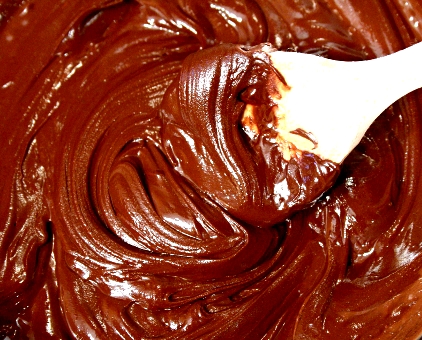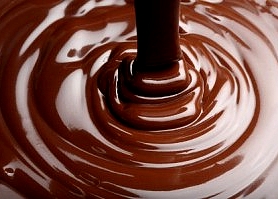Best Ways to Melt Chocolate - The Easy, Proper Methods
What are the best ways to melt chocolate easily, properly and reliably?
Melting chocolate is not the same process as tempering chocolate. However, melting is the necessary first step in the tempering process. If you melt the chocolate properly it will retain its original temper and texture.
Tempering Chocolate is about getting the cocoa butter to crystalise in just the right way for your use of the chocolate. Tempered chocolate provides a stable structure for the chocolate so it can be used to create a variety of shapes such as leaves, flowers, animal shapes, cups, sheets, and various other shapes using molds.
Melting chocolate can be tricky and if you make a mistake the chocolate will turn to a seized mess or become grainy, ruining its taste. You may end up chucking the mess into a bin.
However delicious properly melted chocolate is essential for so many wonderful dessert treats so that it is important to learn how to master it. There are to main ways to melt chocolate either by using a microwave or by heating the chocolate over a hot-water bath using a double boiler or you own homemade version. This article outlines these methods.


Melting Chocolate using a Microwave Oven
The easiest way is microwave oven method, but works best for small quantities of chocolate (less than 1 pound; 500 g) and when the chocolate it chopped into very even size small pieces(chocolate chips work very well with this method). If you are using chocolate block or bars you will need to cut the chocolate into small even-sized pieces.
The best method is not to do it continuously, but to microwave in short bursts, generally about 30 seconds at a time. Stir the chocolate well between each session so that the chocolate is evenly heated. This prevents burning of the bottom layer while the top may not be melted. Keep going until the chocolate is warm but not hot and the melted pieces are soft, retaining their shape, rather than being completely liquid. This is the time when the chocolate pieces should be removed from the oven. Keep stirring and let the residual heat in the microwave container to complete melt the melting process. If done gently and properly with minimum heating time the melted chocolate will still be tempered and not grainy. It depends partially on the type and brand of chocolate. If you overheat the chocolate it will lose is original temper, and you will have to temper it again.
Melting Chocolate Over Boiling Water
The double boiler method requires more equipment, but it gives you the most temperature control while melting the chocolate. Water boils at 100 degrees C ( 212 degrees F). So by suspending the chocolate in a bowl that is heated by the steam you can guarantee that the temperature will not exceed this. If you don't have a double-boiler you can make an equivalent by finding a stainless steel or ceramic bowl which fits on top of one of your saucepans. Make sure that the water in the bottom pan does not come into contact with the upper pan into which you put the chocolate.
Using the double- boiler method you can melt much quantities of chocolate and use bigger pieces. However it always pays to chop the chocolate up before melting it. Choose a heat proof bowl, or the double-boiler upper pan and add your chocolate in. Put about one inch (2 cm) of water into the lower saucepan. Put the bowl with the chocolate aside, and heat the open saucepan to boiling. Turn down the heat to a gentle simmer.
Place the bowl of chocolate on top and stir the chocolate frequently using a plastic spatula or other implement. Avoid using a metal stirrer as it make scratch the Teflon or other surface covering on the bowl. Keep heating and stirring until all the chocolate has just melted. Make sure you do not to allow any condensation or steam to get into the melting chocolate as this can cause it to seize.
What Causes Chocolate to Seize and How to Prevent It
Seizing is an instantaneous reaction lovely shiny melted chocolate suddenly becomes clumped up into a thick, dull paste. It is a disaster as it ruins the chocolate. The cause is often related to moisture. During the process of refining the cocoa bean extracts into chocolate most of the moisture is driven off, so that the chocolate produced is very, very dry. Melted chocolate is oily but contains very little water. Adding water to the chocolate, even in steam and condensation from the double boiler, acts like adding water to flour. It will form a paste. Even tiny amounts of water become like a glue sticking the sugar and cocoa particles together.
If a little water accidentally splashes in your bowl and it starts to seize you may be able to resurrection it for other uses by adding a little cream.
Chocolate can also become seized if it gets too hot and starts scorch in the microwave. This can be prevented by using 20-30 second bursts in the microwave on moderate heat settings.
Hot Tips for Melting Chocolate
- Every microwave oven is different and so you need to work out the best combination of bursts and temperature for your microwave oven.
- Start with the lowest heat setting first or the setting for melting chocolate if you oven has that option). Use short microwave bursts of 10-20 seconds initially, increasing the time as you get more confident.
- After each heating period, you need to thoroughly stir the chocolate until it is soft but has not completely lost its structure.
- Use chocolate of moderate quality, so that the losses will be minimized if a disaster happens.
- Make sure to use a thoroughly dry, non porous tool to stir the chocolate. A wet wooden spoon can introduce moisture and may cause the chocolate to seize.
- Chop chocolate into small pieces or uniform size before melting
- Keep chocolate away from high heat especially when it is directly applied. The upper pan of a double boiler may get too hot if the heat the base pan above a gentle simmer.
- If your chocolate goes grainy or separates splits you can sometimes save it by stirring through a spoonful of vegetable oil or melted butter.
- Melting chocolate needs constant attention and needs to be constantly stirred to blend the mixture distribute the heat evenly. This also help to prevent overheating the chocolate and scorching the bottom.
- Don't put a lid on the melting chocolate because team will condense and run back into the in the pan and could cause it to seize.
- Don't trying to speed up the melting as this is a recipe to fail. Be patient and do it slowly. It will be worthwhile